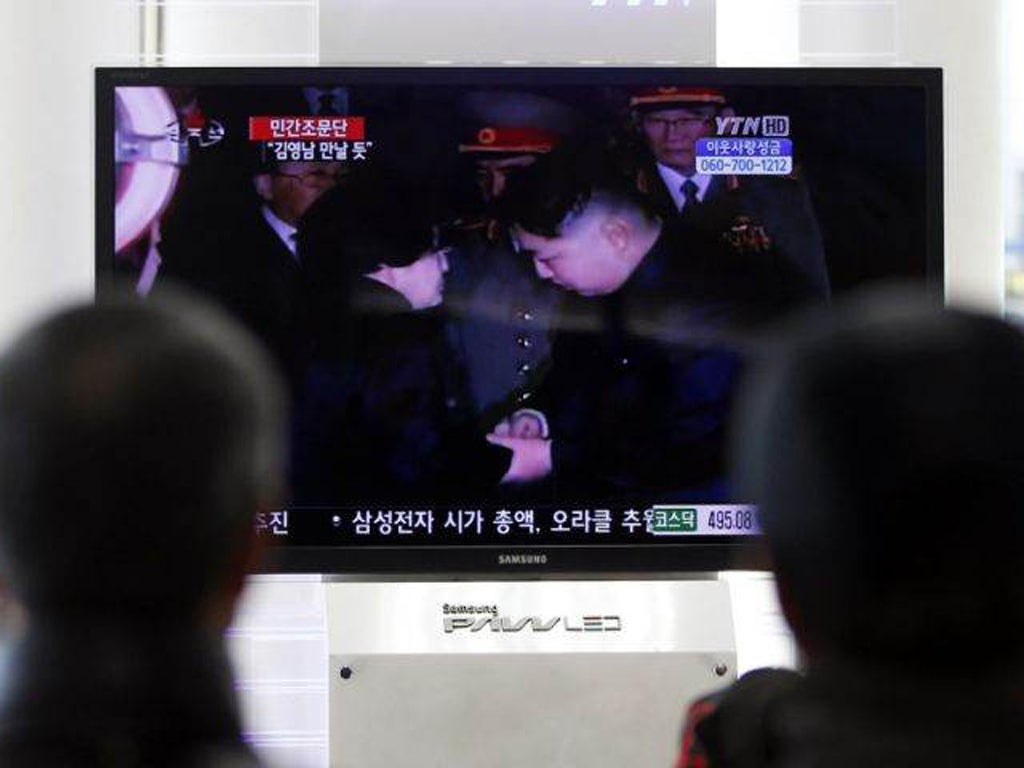Kim Jong-il’s funeral will provide clues to North Korea's future

Your support helps us to tell the story
From reproductive rights to climate change to Big Tech, The Independent is on the ground when the story is developing. Whether it's investigating the financials of Elon Musk's pro-Trump PAC or producing our latest documentary, 'The A Word', which shines a light on the American women fighting for reproductive rights, we know how important it is to parse out the facts from the messaging.
At such a critical moment in US history, we need reporters on the ground. Your donation allows us to keep sending journalists to speak to both sides of the story.
The Independent is trusted by Americans across the entire political spectrum. And unlike many other quality news outlets, we choose not to lock Americans out of our reporting and analysis with paywalls. We believe quality journalism should be available to everyone, paid for by those who can afford it.
Your support makes all the difference.A sub-zero winter wind blew across the low-lying mountains of the southern reaches of North Korea while the country seemed frozen in time awaiting the funeral tomorrow for long-ruling Kim Jong-il.
The ridges and slopes of North Korea, their brown images visible from this modern border complex that’s meant to be the main gateway between the two Koreas, were stripped bare years ago for firewood. There was no sign of life, nothing moving, on the narrow road leading to the boxy cement structures that dominate the ancient capital of Kaesong several miles north, next to the “truce village” of Panmunjom.
“Kim Jong-il’s death is one thing, but what worries me is the condition of North Korea now that he’s gone,” said a clerk in the spacious “immigration office” near the last station on the unused line into North Korea. “It’s going to be dangerous up there. No one knows what will happen.”
Those old enough to remember when North Korean troops poured south in the first days of the Korean War wonder if North Korea’s apparent new leader, Kim Jong-il’s third son and heir, Kim Jong-un, thrust into at least the semblance of power while in his late 20’s, might want to foment more trouble to divert attention from unrest at home.
“They would blame everything on the South,” said a grizzled guard who fled south with his parents as a boy in the days after the invasion. Now he looks over the vast station, an edifice in glass, steel, marble and granite. Several times a day, near empty trains bring curiosity-seekers and workers on the way to the Kaesong economic zone, a complex of more than 100 small factories staffed by about 50,000 North Koreans. ”They could do anything.”
On the eve of Kim Jong-il’s funeral, however, the immigration centre was crowded as two widows in black, with relatives and retainers, arrived after spending the better part of two days in North Korea. They had gone, they both said, just to express condolences before the glass-enclosed coffin of Kim Jong-il in the same memorial hall in Pyongyang that contains the embalmed remains of his long-ruling father, Kim Il-sung, who died in 1994.
Still, there was no doubt of the doubt of the significance of the visit of Lee Hee-ho, the 90-year-old widow of Kim Dae-jung, the South Korean president who initiated the Sunshine policy of reconciliation with the North, and Hyun Jeong-eun, whose husband had committed suicide in 2003 after his indictment for channelling payoffs to bring about the June 2000 summit between Kim Dae-jung and Kim Jong-il.
“Kim Jung-un thanked them for travelling so far,” said an aide to Lee Hee-ho as she stood proud but silent along with two of her late husband’s sons – the elder by his first wife, the youngest her own – who had accompanied her to Pyongyang.
Ms. Lee and Ms. Hyun exchanged no other words, but images from North Korean television showed the warmth of the welcome – Kim Jong-un shaking hands repeatedly with both of them.
Just as important were breakfast and lunch meetings with senior officials, notably Kim Yong-nam, chairman of the Supreme People’s Assembly, a job that makes him titular head of state. it was not clear, however, if they also met Jang Song-thaek, brother-in-law of Kim Jong-il, who’s thought to be the single most powerful figure – a de facto regent calling the shots or at least tutoring the inexperienced Kim Jong-un on the ways of power in his country.
The line-up of those at the funeral - who shows up on North Korean TV, who’s standing next to whom, whose photographs appear in the next edition of Rodong Sinmun, the party paper - will provide vital clues as to individual power and influence. For true Pyongyang-watchers, those revelations will be the most important aspect of the funeral.
South Korean officials in Seoul were politely upbeat about the visits – the only delegations permitted to go to Pyongyang by the conservative government of President Lee Myung-bak. Park Sun-jin at the unification ministry said the government would “promote and continue inter-Korean exchanges” in hopes they would “lead to reconciliation between the two side.”
One anonymous official, however, was less sanguine. “Without the Sunshine policy of Kim Dae-jung North Korea would not exist in its current form,” he said. “It is natural they are treated with great respect in Pyongyang.”
Join our commenting forum
Join thought-provoking conversations, follow other Independent readers and see their replies
Comments